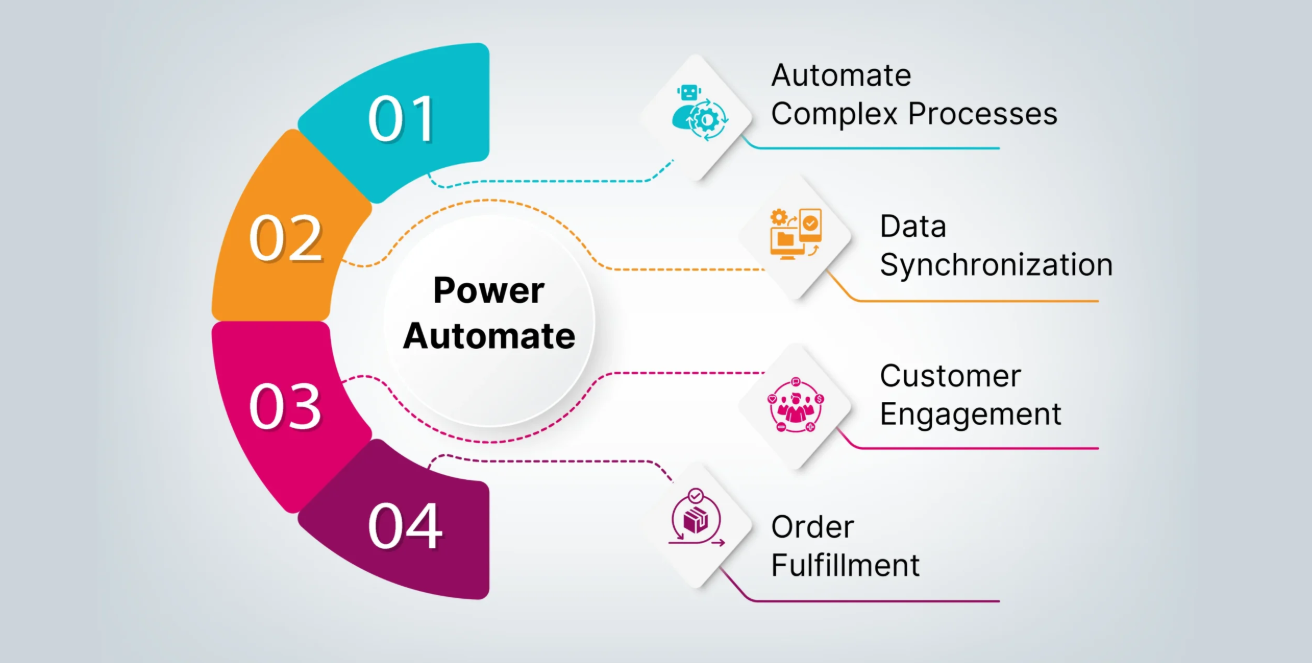
How Optical Character Recognition Software Powers Smart Data Capture Workflows
With businesses coming across advanced technology to manage data, they are overwhelmed by the sheer volume of information coming from multiple sources. Managing and utilizing this data efficiently is a critical challenge. With an estimated global market size of USD 12.56 billion in 2023, and is expected to grow at a CAGR of 14.8% from 2023 to 2030, OCR (Optical Character Recognition) technology has become a game-changer in addressing this issue. It allows businesses to convert printed documents, scanned images, and PDFs into machine-readable text, transforming static data into actionable insights.
The optical character recognition software not only automates data capture but also enhances workflows by extracting critical information with high accuracy, making it easier for organizations to access, process, and utilize their data effectively. Industries such as BFSI, healthcare, retail, logistics, and government are already embracing OCR to streamline their operations, improve efficiency, and maintain competitiveness.
In this article, we will explore how implementing the optical character recognition software powers smart data capture workflows and supports businesses’ digital transformation.
Understanding OCR and Smart Data Capture
Optical Character Recognition (OCR) is a technology that converts different types of documents, such as scanned paper documents, PDFs, or images captured by a digital camera, into editable and searchable data.
Smart Data Capture, on the other hand, refers to the use of advanced technologies like OCR, Artificial Intelligence (AI), and Machine Learning (ML) to automatically extract, classify, and process data from unstructured or semi-structured documents. Unlike traditional OCR, which primarily focuses on text recognition, smart data capture encompasses a broader scope, including data validation, contextual understanding, and integration into business workflows.
Read also: CNC Machining Manufacturer: Backbone of Modern Industry
The Role of OCR in Smart Data Capture Workflows
OCR technology plays a critical role in smart data capture workflows by automating the extraction and processing of information from a wide variety of document types. Here’s how it works:
- Extracting Text
OCR technology begins by converting both printed and handwritten text from scanned images, PDFs, and photographs into machine-readable formats. This process involves detecting characters and words from the document image, regardless of whether the text is typed or handwritten. Once OCR recognizes the characters, it transforms them into digital text, making the information searchable and editable. This step eliminates the need for manual data entry, saving valuable time and reducing errors. - Recognizing Layouts
A key feature of OCR is its ability to preserve the layout and structure of documents. In addition to recognizing text, OCR algorithms can detect the document’s formatting, such as tables, columns, headers, and footers. This ensures that the data extracted retains its original organization, allowing businesses to maintain document integrity. For instance, in financial documents like invoices, OCR not only extracts the total amount but also recognizes the specific structure of line items, dates, and vendor details, maintaining the clarity of the original document. - Enhancing Accuracy
Manual data entry is prone to human errors, especially when dealing with large volumes of information. OCR software significantly reduces these risks by automating the extraction process with high precision. By removing the need for human involvement in repetitive tasks, OCR ensures that extracted data is accurate and consistent. This enhanced accuracy is crucial for maintaining reliable business records and supporting decision-making with trusted data.
Once the OCR technology has processed the document, more advanced technologies like Artificial Intelligence (AI) and Machine Learning (ML) algorithms take over to further optimize the data capture workflow:
- Classifying Documents
AI and ML algorithms work together to determine the type and purpose of the document. This step involves analyzing the context of the extracted data and categorizing the document correctly, whether it’s an invoice, purchase order, receipt, or contract. The system learns to identify specific characteristics within documents, ensuring that the right information is directed to the correct processing pipeline for further action. - Validating Data
Once the document is classified, AI and ML algorithms perform data validation. They cross-reference the extracted data with existing databases or predefined rules to ensure that all information is accurate and consistent. For example, suppose an invoice mentions a specific product or service. In that case, the system can check whether the prices match the company’s database or if the vendor details are correct, ensuring compliance with internal policies and preventing discrepancies. - Routing Information
After validation, the system routes the data to the appropriate department, system, or personnel for further processing. Whether it’s sending the information to an accounting system for payment or to a supply chain team for order fulfillment, OCR technology ensures that data flows seamlessly through the organization. This automation eliminates manual hand-offs, accelerates decision-making, and reduces bottlenecks in the workflow.
In short, the optical character recognition software serves as the backbone of smart data capture workflows, streamlining data extraction, classification, validation, and routing. The integration of AI and ML further enhances this process by improving accuracy, efficiency, and scalability, making it an indispensable tool for businesses looking to optimize their data management systems.
Benefits of Integrating OCR Software in Data Capture Workflows
Integrating the optical character recognition software into data capture workflows can significantly enhance operational efficiency and reduce the reliance on manual tasks. OCR technology automates the extraction of data from documents, transforming unstructured information into machine-readable formats. This automation streamlines processes, improves accuracy, and offers scalability to handle growing data volumes. Below are the key benefits that businesses can achieve by implementing OCR in their data capture workflows:
- Increased Efficiency
OCR technology eliminates the need for manual data entry, automating repetitive tasks that previously consumed significant time and resources. Employees can now focus on more strategic, high-value activities, such as decision-making and customer service. This shift leads to faster document processing and quicker turnaround times, allowing businesses to operate more effectively and meet tight deadlines. - Cost Savings
OCR software significantly lowers operational costs by reducing the need for manual labor and minimizing human errors. With fewer mistakes, businesses can avoid costly rework, fines, or delays. Additionally, automation reduces the demand for human intervention, freeing up staff to work on other critical tasks, thus optimizing overall resource allocation. - Improved Accuracy
OCR technology enhances data accuracy by minimizing the risk of human error. Traditional data entry is prone to mistakes, such as incorrect input or omissions, but OCR ensures that information is captured consistently and correctly. This leads to higher data quality, which is crucial for making informed decisions, maintaining compliance, and providing seamless operations across departments. - Scalability
As businesses grow, so does the volume of data they handle. OCR software allows companies to scale their data processing capabilities without requiring a proportional increase in resources. Whether it’s invoices, contracts, or customer forms, OCR can efficiently manage larger volumes of documents, enabling businesses to expand without compromising efficiency or accuracy. - Compliance and Security
OCR helps businesses meet regulatory requirements by digitizing and securing sensitive documents. The software ensures that data handling processes comply with industry standards such as GDPR, HIPAA, and other privacy laws. OCR also strengthens document security by creating digital records that are easier to store, protect, and retrieve, minimizing the risks associated with physical document handling.
Integrating optical character recognition software into data capture workflows offers transformative benefits. It helps businesses save time, reduce costs, enhance accuracy, and scale effectively. As industries continue to digitize their operations, OCR technology will remain a critical tool for improving business processes and staying competitive.
How Docsumo Helps Transform Document Workflows
Businesses worldwide face the challenge of handling large volumes of documents manually, which can lead to inefficiencies, errors, and delays. Docsumo, an AI-powered optical character recognition software, streamlines workflows and automates the entire document processing process.
Docsumo’s OCR Software Features That Set It Apart:
- AI-Powered Data Extraction
Docsumo utilizes advanced AI technology to extract data from complex documents such as invoices, bank statements, and contracts. This capability reduces human intervention, ensuring the accuracy of the extracted data and minimizing the chances of errors. - Seamless Integration with Systems
Docsumo integrates effortlessly with your existing systems, such as accounting software, CRMs, or ERPs. This integration enables real-time data flow between systems, making it easier for businesses to manage documents and improve overall operational efficiency. - Customizable Validation Rules
The OCR software offers customizable validation rules, ensuring that data extracted from documents is accurate and matches predefined parameters. This feature allows businesses to tailor the solution to their specific needs and improve compliance with internal policies. - Pre-trained AI Models
Docsumo comes with over 100 pre-trained AI models tailored for various document types and industries. This eliminates the need for extensive training, allowing businesses to start using the software with minimal setup time. - User-Friendly Interface
One of the standout features of Docsumo’s OCR platform is its intuitive, user-friendly interface. This reduces the learning curve, enabling teams to start processing documents quickly and efficiently without the need for specialized training. - Streamlined Document Workflows
Docsumo’s OCR software simplifies document workflows by automating key steps, including document ingestion, classification, extraction, validation, and routing. This streamlining helps businesses save time and increase productivity by reducing manual processes. - Data Security and Compliance
With Docsumo’s OCR platform, businesses can ensure that sensitive data is securely processed and stored. The software complies with the highest data privacy standards, including GDPR and HIPAA, ensuring that business operations meet compliance requirements. - Advanced Analytics
Docsumo’s reporting dashboard provides businesses with insights into document processing performance. This feature allows companies to track key metrics such as data extraction accuracy, time savings, and cost reductions, helping them make informed decisions.
Conclusion
OCR software is a cornerstone of smart data capture workflows, enabling businesses to automate data extraction, enhance accuracy, and improve operational efficiency.
Docsumo, in such a case, stands out as an ideal choice for businesses seeking to automate their document processing workflows. Its combination of AI-driven extraction, customizable validation rules, seamless integration, and user-friendly interface makes it a powerful tool for businesses across various industries, including finance, legal, healthcare, and logistics.
Transform your document processing workflows with Docsumo’s optical character recognition software. With over 99% data extraction accuracy, customizable features, and seamless system integration, Docsumo is the ideal solution to optimize your business operations.
Book a demo today and start your free 14-day trial to explore how Docsumo can streamline your document management and help your business scale more efficiently!




